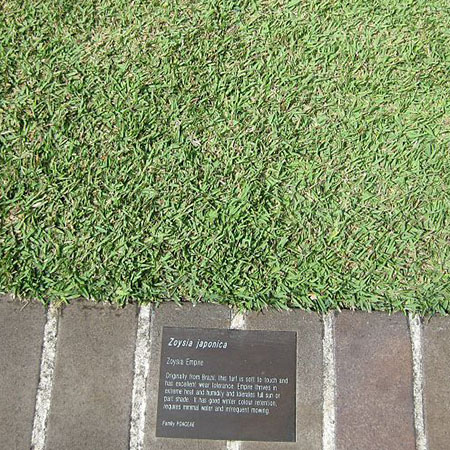Florida is a place where maintaining a lush lawn and knowing the best times to fertilize grass can challenge homeowners with the greenest of thumbs. Although fickle weather patterns can be hurdles, too, Myakka soil is a primary cause of the difficulty in achieving a flawless lawn. The Florida State Soil, Myakka fine sand doesn’t occur in any other states. Getting fertilization right is tough partly because it’s difficult for Myakka to hold in the nutrients and moisture from fertilizers. You can always get any help you need at Cypress Creek Landscape Supply, including fertilization tips. Learn more about Myakka soil below plus information about the best times to fertilize different types of lawn grass in Florida.
 Myakka soil is clay-like in texture in some areas and extremely sandy in others. Compared to regular soil, Myakka is more compact, which means grasses and plants have less room to receive nutrients, breathe, and increase. Properly preparing Florida soil for grass is the first step in ensuring a beautiful lawn. Providing nourishment at the correct times is also important.
Myakka soil is clay-like in texture in some areas and extremely sandy in others. Compared to regular soil, Myakka is more compact, which means grasses and plants have less room to receive nutrients, breathe, and increase. Properly preparing Florida soil for grass is the first step in ensuring a beautiful lawn. Providing nourishment at the correct times is also important.
Many different types of lawn grasses are cultivated in Florida, the most common of which are St. Augustine and varieties of Bahia grass. Some types of grass are more prone to flourish in certain parts of the state as opposed to others. For instance, northern Florida has denser soils that support the growth of centipede grass. St. Augustine does well in coastal areas because of its salt tolerance.
You can expect more healthy growth of your lawn with fertilizer. It’s best to pay attention to the color of your grass as opposed to accelerated growth, to prevent overly frequent mowing. Below are helpful tips on fertilizing different grass types in The Sunshine State.
Use fertilizer for St. Augustine lawns at the rate of 6 pounds per 1,000 square feet of lawn. A recommended schedule for feeding St. Augustine grass is in March, May, July, and September. Keep the grass cut after it reaches a height of 3 to 4 inches.
Pensacola, Paraguay 22, and Argentine are a few of the Bahia grass types that grow well in Florida. The ideal feeding schedule for Bahia is the same as for St. Augustine—March, May, July, and September. Maintain a grass height of 4 inches at the most.
The varieties of Bermuda grass cultivated in Florida include Tiflawn, Tifway, and Ormond. These grasses should be fertilized throughout the course of the year—in January, March, April, June, July, September, October, and December. The pattern is two months of fertilizing and one of rest.
Centipede grass is quick-growing and relatively inexpensive, but it’s not considered as attractive as the more popular grasses. Centipede grass should be fed in March and July, and the recommended height is no more than 2 inches.
 Fertilize Zoysia Grasses
Fertilize Zoysia GrassesFor Zoysia grasses, recommended feedings are March, April, June, September, and November.
Cypress Creek Landscape Supply has the specialty landscape products you need, including a wide variety of fertilizer blends. Give us a call at (813) 933-7944 today or stop by at 12734 N. Florida Ave., Tampa, FL.